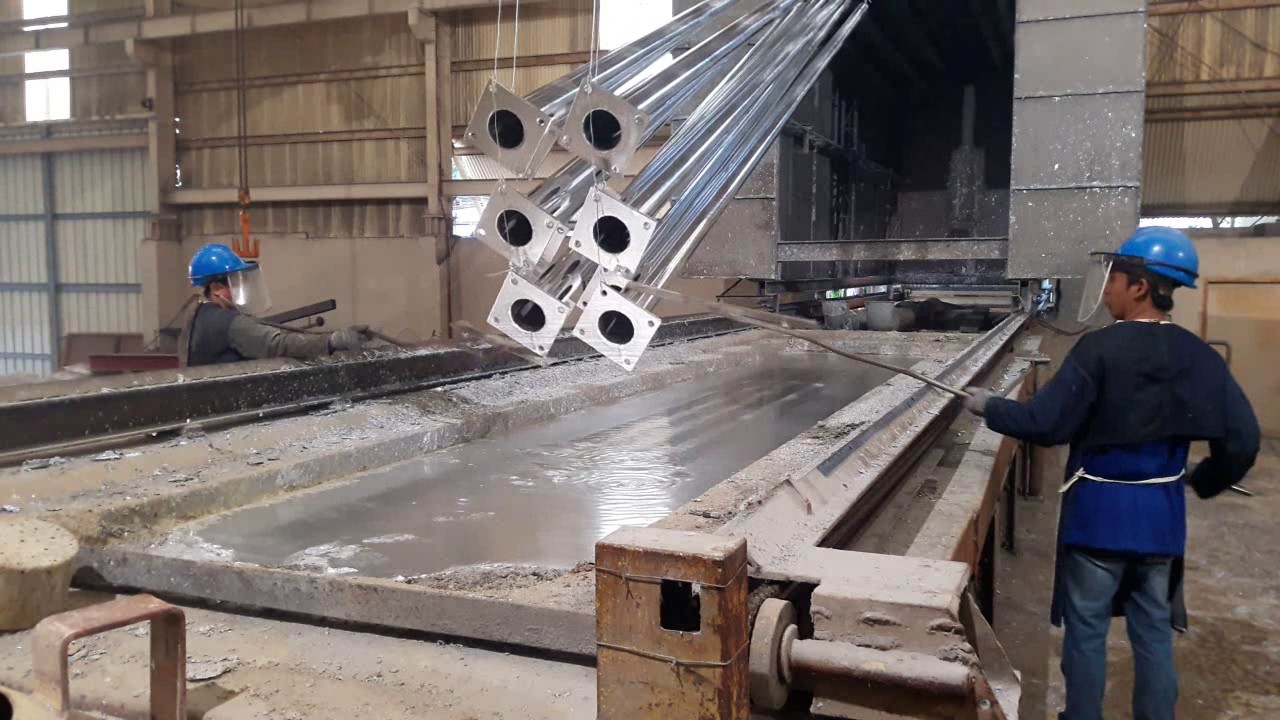
Currently, many manufacturers choose to use hot dip galvanizing. However, they still need to know more when choosing to buy. In the actual selection of many aspects, they still need to consider the comprehensive functions and various applications of the equipment itself. The current processing of hot dip galvanizing has many characteristics and characteristics because the effects of current applications are different in various aspects, and a basic understanding is required in actual processing and processing, but many manufacturers still do not know what to do when choosing hot dip galvanizing precautions.
The hot-dip galvanizing process is relatively simple. From the perspective of hot dip galvanizing process, it includes degreasing, washing, pickling, galvanizing, drying, finishing, cooling, passivation, rinsing, drying and inspection. The process of hot dip galvanizing is also very special. First, pay attention to its details and keep it safe. According to its production and processing conditions, it is important to control the temperature of the zinc liquid. Depending on your processing requirements, the temperature of the zinc bath will be controlled differently. Different factors should be considered in terms of handling and temperature should be controlled as much as possible.
The duration of zinc coating protection is closely related to the coating thickness. Generally speaking, the thickness of zinc coating only needs to be 6-12 μM when used in dry main gas or indoors, but in harsh environments, the thickness of zinc coating needs to be 20 μM to 50 μM. Therefore, when choosing the thickness of the galvanized layer, the influence of the environment should be considered. After the galvanized layer is passivated, a bright, ancient and beautiful colored passivation film can be formed, which can significantly improve its protective performance.

The temperature control of molten zinc is more important. Depending on the processing requirements, the temperature control of the zinc solution will vary. Different factors should be considered during processing and the temperature should be controlled as much as possible. Therefore, the temperature must be controlled to avoid its consumption. The environment and controls should also be considered, and relevant requirements and operating procedures should be strictly followed. It can form a good protective layer on the outside of the product, has good stability and stability, reduces the possibility of product use problems, and has a safe texture. In the actual galvanizing process, it is still necessary to further understand the preventive measures and processes, and strictly follow the formal procedures to ensure a good and stable treatment effect.
The operation process needs to be stable, and a problem in a certain link will cause adverse reactions in the subsequent process, which will greatly increase the operating cost and lead to unqualified galvanized products. In particular, the temperature of the zinc liquid should be kept normal, and the zinc liquid should reach a molten state after heating. Because at this time, the material can only be immersed in the zinc solution, so that the zinc and iron can react normally and completely, and then a good zinc coating can be formed to protect the surface of the material from external corrosion.